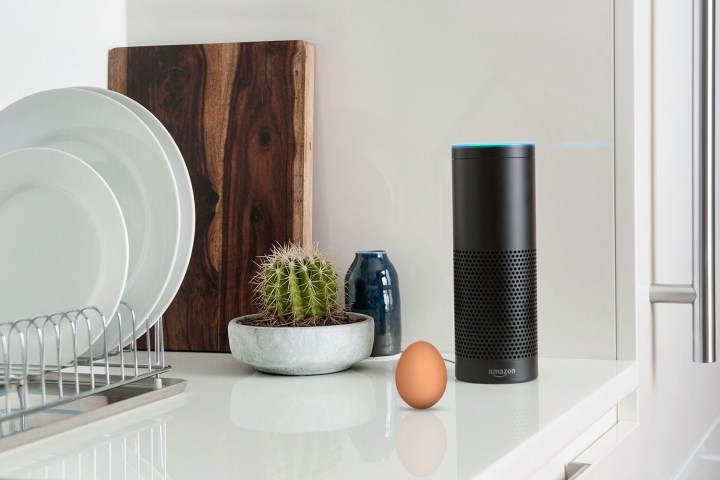
In more concrete terms, Sensory is enabling what it calls “wakeup words” — that is, terms and phrases that trigger the always-on listening that is a hallmark of assistants like Google Now and Siri — on devices that integrate Amazon’s Alexa. “We pioneered the concept that devices don’t have to use buttons to use speech recognizers,” Todd Mozer, Sensory’s chief executive officer, told Digital Trends. “Sensory’s been around for a long time. Speech recognition and voice synthesis is very trendy right now, but we’ve been using machine learning techniques for more than a decade.”
Sensory’s solution, TrulyHandsFree, takes the form of an “assortment” of speech synthesis models tailor-made for a spectrum of electronics. The voice engines, of which there are more than 20, range from no-frills, single-word models to powerful algorithms capable of deciphering speech in “highly noise robust” environments. One, an ultra low-power model designed for use in smartphones, smartwatches, and other battery-operated mobile devices which lack a dedicated power source, requires “less than one milliamp” of power under load, Mozer said.
Sensory is of course not new to mobile. The company has worked with Motorola, Samsung, and other smartphone makers to enable hotwords like “Hey Galaxy” and “OK Google” on flagships from the Galaxy series to the Moto X. Crucially, Sensory’s solutions interpret voice locally, on silicon within the devices themselves. Mozer said that helps to shave both processing time and excessive power draw. “The internet can do a lot, but you still need hardware to perform the listening on the device,” Mozer said.
The launch of Sensory’s Alexa wake word suite comes at a pivotal moment for speech synthesis — and Amazon’s
“We can help get them on platforms that might be difficult to run on their own,” said Mozer. “We’re very focused on the area of speech for consumer electronics.”
To that end, Sensory partnered with home intercom startup Nucleus to support wake words on its hardware. And it’s extending support of the new Alexa wake word platform to AVS for Raspberry Pi, an open source project that imbues the affordable Raspberry Pi computing board with
As for the future, Sensory intends to pursue an element of increasing importance in the voice-activated assistant field: speaker identification. Mozer envisions a “layer of authentication,” or means of personalizing voice recognition to individual voices. “We have voice imprint platforms that are secure enough to do transactions,” he said. The potential is nearly endless: imagine a Google Home that automatically tailored your song requests to your musical preferences, for instance, or an Amazon Echo that could keep the kids from ordering stuff from Amazon. “Anybody can talk to a home assistant,” he said. “We can deliver that security.”
See Alexa-Enabled Devices here
Editors' Recommendations
- What to do if your Amazon Alexa app is not working
- Amazon might launch a paid version of Alexa later this year
- The best Alexa skills to use on your Amazon Echo in 2023
- Everything announced at Amazon’s fall 2023 devices event
- At long last, Amazon brings AI features to Alexa


